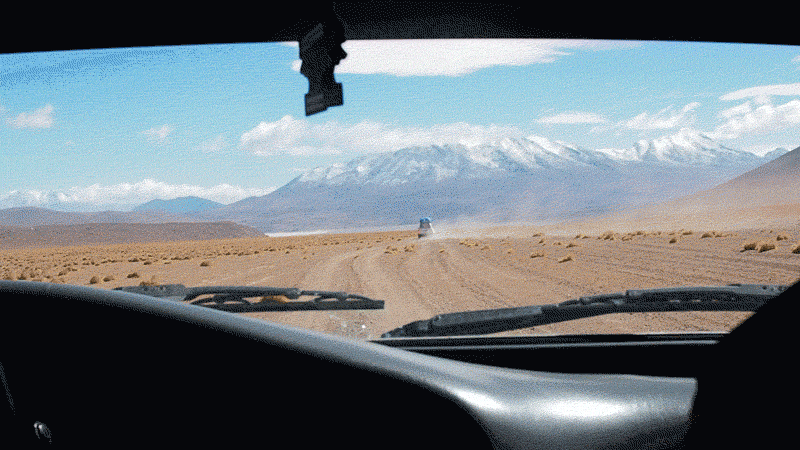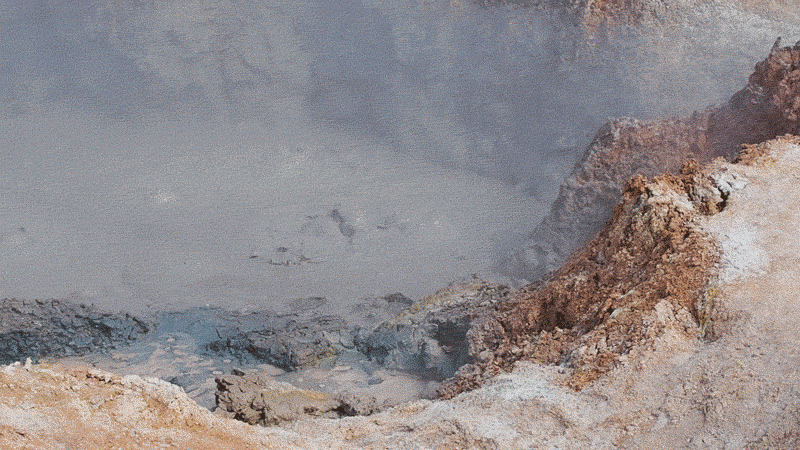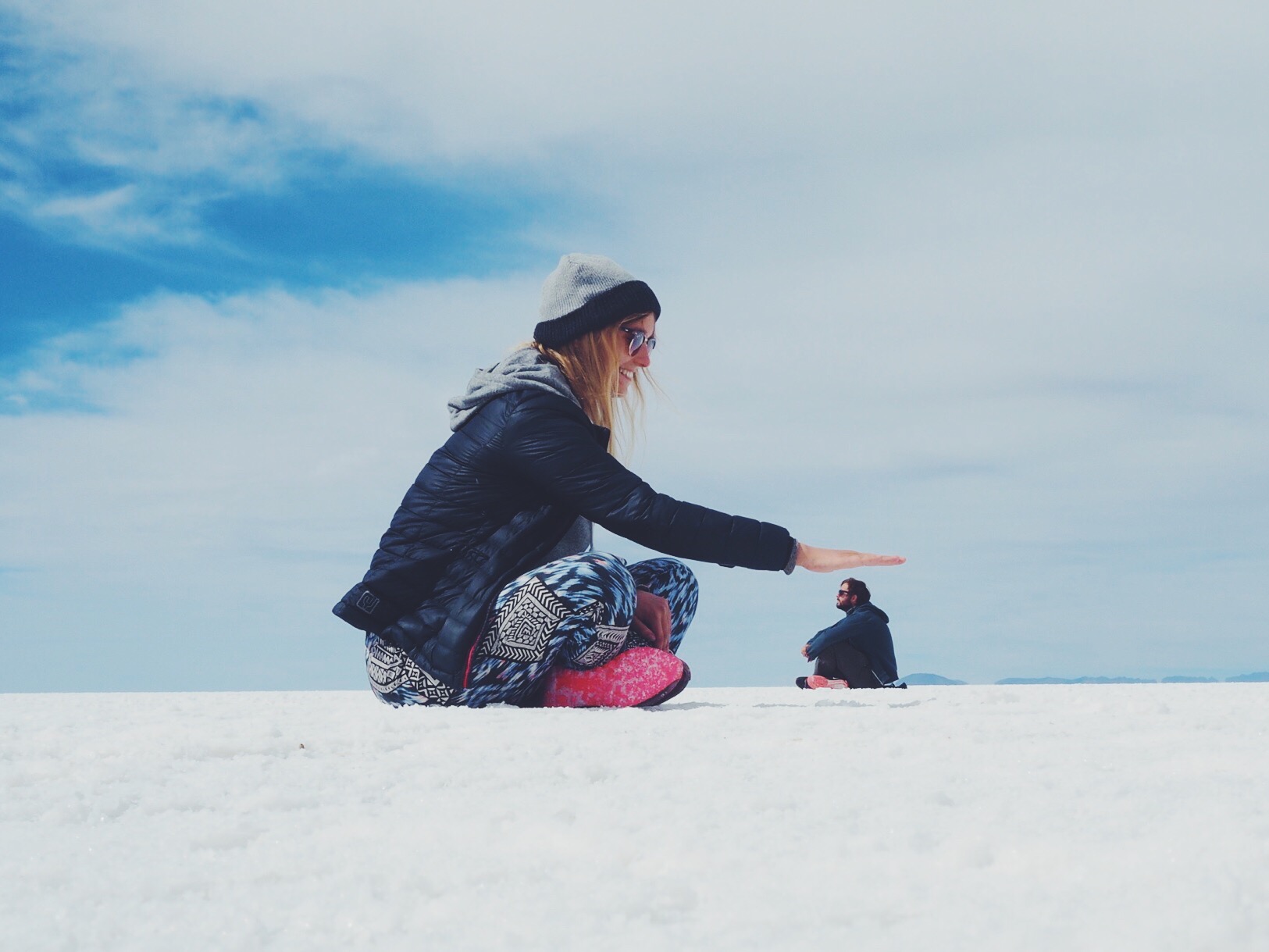Bolivia — Uyuni Salt Flats
The 3 day Jeep tour from San Pedro de Atacama to Salar de Uyuni was, for us, one of the things we had been looking forward to most during our trip around South America. After a few days in San Pedro de Atacama we finally decided on a tour company (there are loads to chose from, we went with Atacama Mistica). We had heard plenty of horror stories about drunk drivers, and therefore did a lot of research and asked around to make sure that it was going to be safe. The night before we bought some final provisions for the trip, including snacks and 6 litres of water each, and settled in for a much needed sleep before the adventures ahead.
Day 1
We were picked up from our hostel by our tour bus at 7.30am, and made our way to the border. Only 20 minutes into the trip we were met with complications: it had snowed heavily near the boarder crossing due to the storm the night before, and so we had to wait 2 hours for the snow to be cleared. Because of this we had breakfast early, and took the chance to chat with other members of the group before we were split into 2 separate Toyota Land Cruisers, with our packs and water on top of the roof in tarpaulins. After being introduced to our driver we were finally ready to set off on our 3 day adventure.
After driving through the snow-covered mountains we arrived at the first stop on the tour, Laguna Verde and Lagna Blanco, two beautiful mineral-filled lakes named after their green and white colour. As the lakes were pretty exposed it was quite cold and windy, so we only stopped for about 10 minutes to get a few snaps and continued on our way.
We drove onwards passing the Desierto Salvador Dalí, and arrived at Laguna Polques, a natural hot springs at an altitude of 4400m. We parked up with the rest of the Jeeps, quickly put our bathers on (the air temperature was pretty chilly!) and sank into the amazing hot water that had been warmed by the earths core. With guanaco and flamingos wandering in the lake beyond it was a really special experience. It was difficult to leave the water once we’d got used to the temperature, but after half an hour or so we finally dragged ourselves out and got changed speedily before continuing our journey.
Next on the route were the Sol de Mañana Geysers, natural pillars of steam that shot out of gaps in the earths crust. The entire area was surrounded by warm bubbling potholes of yellow, orange and grey clay; neither of us had ever seen anything like it before! The smell from the geysers was pretty unpleasant (kind of an eggy sulphur), but it was fascinating to be in an area that was so impacted by the incredible activity from the earths molten core.
We continued on our journey until we reached the final stop of the day; Laguna Colorada (or the red lake), a stunning expanse of salt water home to flocks of three types of pink flamingo: the James, the Chilean and the Andean. Seeing such majestic birds up close in the wild was made even more special due to the beautiful surroundings. After about an hour of walking around the lake and taking pictures we headed back to the Jeep and drove to our first nights accommodation, passing a few more wild guanacos on the way.
We were told that the first nights accommodation would be basic and very cold due to the altitude and remote location. On arrival we found the description pretty accurate as we were guided to our concrete-based beds. Electricity was only on for a few hours, so after our three course meal of soup, spaghetti and peaches (which was tasty considering!) we took advantage of the lights by playing cards and drinking rum with our tour companions (one being a professional poker player!)
Day 2
After sleeping better then expected despite the high altitude and below freezing temperatures (thank you rum blanket) we woke early for breakfast and set off in the Jeeps for our second day of adventure. Our first stop was to the Siloli desert where the famous Stone Tree rock formation is found. It stood amongst various other interesting rock formations in an expanse of dusty, exposed desert, and as we were battered by the winds and sand it was easy to understand how after thousands of years of erosion these amazing natural rock sculptures could have been formed.
We then made our way along the bumpy road into the Inca Canyon where we spotted a viscacha (a large rabbit-like animal) hidden amongst the canyon wall, as well as a group of vicuña and a few llamas crossing the road. With snow topped mountains in the distance contrasting with the dry, rocky desert, it made for a very picturesque drive.
After 2 hours of driving we arrived at two lakes, Laguna Honda and Laguna Hedionda. With crystal clear waters, white sands, pink flamingoes and snow topped mountains all around us, it was a total treat for the eyes. We stopped for lunch with the other tour groups at a small, basic shelter not far from the lake. Again the food was pretty basic, but was hot and filled us up enough for the afternoon.
Once finished we got back into the Jeep and headed past more stunning lakes with even more flamingo's and snowy mountains in the distance. With Pink Floyd's Dark side of the Moon playing from our iPod it made for a pretty epic drive as we continued past Volcano Ollagüe and stopped at the mirador. We noticed a dramatic change in the landscape - it was completely covered in volcanic rock. We pictured how thousands of years ago the lava had flown through the land and finally cooled before being battered by the weather to create such fascinating rock formations.
After half an hour or so it was time to head onwards to our second nights accommodation. This hostel was a bit different however: it was mostly made of Salt! The circular structure consisted of salt rock bricks, a salt floor and salt rock furniture finished in traditional Bolivian textiles. It was a great little space to socialise, drink beer and enjoy talking about the amazing sights we’d seen so far. After another evening of nice hot food, wine, rum and cards we headed to our private rooms for some sleep before our 4.30am start the next day.
Day 3
Getting up at 4.30am was made a lot easier knowing that we were about to visit the main highlight of the tour: the Salar de Uyuni. We piled into the jeep in the dark, still feeling a little sleepy, and drove for around an hour until we started to see the ground beneath us turn white. It was surreal driving in an area so removed from scenery and landscapes, and the ground seemed to go on infinitely, with only the clouds and tiny mountains in the distance marking the end of vast white canvas.
As the sun rose we were treated to a beautiful pink and orange sky surrounded by vast salt desert. It was a magical way to see the salt flats for the first time. As far as the eye could see was brilliant white salt with beautiful hexagonal patterning. We waited for the sun to rise fully, and our cold feet and hands began to regain some feeling as we continued our journey to our next stop, Isla Incahuasi.
After half an hour or so of driving, Isla Incahuasi came into view, an island located right in the middle of the salt flats. Surrounded by giant cacti, we began to climb the stone steps to the look out point. We were told that this entire island had once been under water, and as we walked to the top we spotted amazing fossilised coral and caves that had once been totally submerged by the sea around 40,000 years ago.
We then walked to the mirador to take in the view and get some pictures. At the top we were surrounded by thousands of huge cacti and had a fantastic 360° view, with only a few tiny cars in the distance revealing the scale of the worlds biggest salt flats.
We then descended back down to the bottom and met our fellow tour members at the ’shoreline’ of the island for some breakfast, consisting of tea and an enormous slice of sponge cake! We spotted an Alpaca (who looked like he needed to be hugged!) and then got back in the Jeep and set off once again into the salt flats.
We drove for a little while and parked up without a car or person in sight, and were told we had time to take some of the novelty photos everyone takes when on the salt flats. Embracing the cliché we spent an hour messing around with our scale and practising kung-foo moves against the surreal white back-drop.
After a quick visit to the salt museum and the Dakar rally sculpture we headed to the final stop of the tour: the Train Cemetery. We learnt that the town of Uyuni was once a distribution hub for many trains carrying minerals on their way to the Pacific Ocean ports, but became obsolete after the mining industry collapsed in the 1940s, leaving the old trains to rust. We spent a fun half an hour or so playing train bandits and climbing up the rusty old carriages before heading into Uyuni.
We pulled into Uyuni at 3pm, sadly marking the end of our trip. We had lunch prepared for us while we wandered around the many stalls selling touristy trinkets, and then headed into the town. Despite all the money that tourism brings to the salt flats, the town of Uyuni sadly didn't look like it had benefited much, and seemed pretty run down and poverty-stricken in places. We decided to get a bus straight out of town that evening, and with a few guys from our tour group we boarded a cheap local bus and headed north to the city of Potosi.
Like many of the big sights of South America, theres a lot of hype surrounding them, adding often unrealistic expectations to travellers when visiting. We found the salt flats tour more than met our expectations, with fantastic scenery, interesting wildlife, an excellent driver and a fun group to travel with, making the 4 days a completely unique experience for us. Our highlights included seeing pink flamingoes, swimming in the hot springs and of course the incredible salt flat itself. It turned out to be one of our favourite tours we've had so far, and definitely one that will stand out when looking back on our trip around South America.




























































